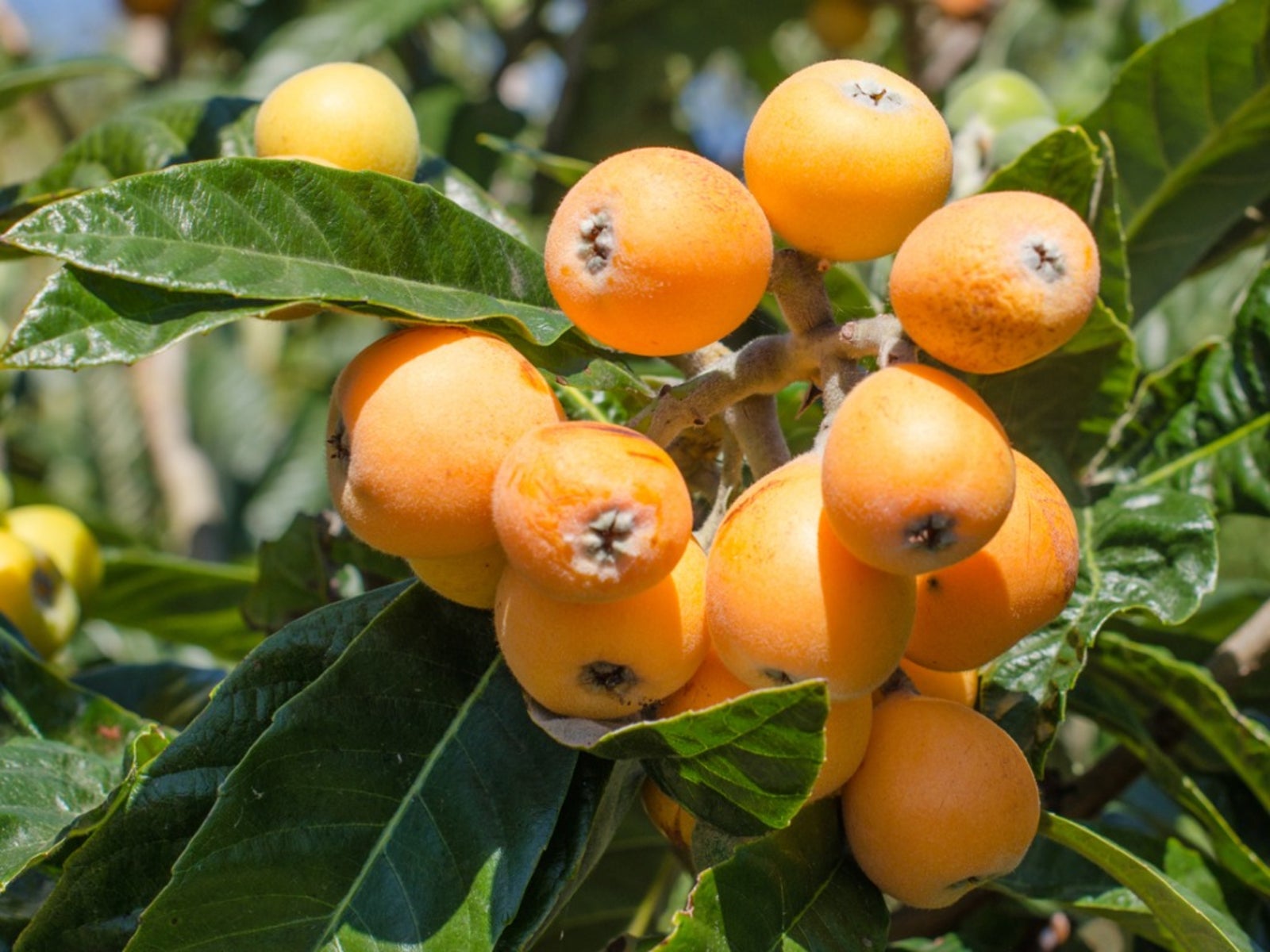Fruitless Loquat Tree: Getting A Loquat Tree To Bloom And Fruit

If you are a gardener who loves to grow his or her own fruit, especially more exotic types, you may be the proud grower of a loquat tree. As with any fruiting tree, there may be a year of a fruitless loquat tree. Often this coincides with a loquat tree that won’t flower. No loquat blossoms equals no fruit. Why is the loquat not blooming and are there any tricks or tips to getting loquat trees to bloom?
Help, My Loquat Did Not Bear Fruit!
There may be a few reasons for a fruitless loquat tree. As mentioned, lack of fruit set is often in conjunction with a loquat tree that won’t flower. Probably the most common reason for a loquat not blooming, or any fruiting tree for that matter, is improper planting. Let’s take a look at the correct way to plant a loquat. Loquat fruits (Eriobotrya japonica) are subtropical trees that are native to Southeast Asia. They have adapted to USDA zones 8 and above. The trees have large, dark green leaves that lend a tropical air to the landscape. Loquat fruit is 1-2 inches (2.5-5 cm.) across and light yellow to apricot in hue, round, oval or pear shaped with smooth or velveteen skin. They prefer non-alkaline soils with moderate fertility and good drainage. If your loquat did not bear fruit, it may be in the wrong location. Maybe it needs more sun or amended soil. Loquats are particularly sensitive to cold temps so if you have had unseasonably cold weather, the tree is less likely to bloom. Established trees can survive to as low as 12 degrees F. (-11 C.) when properly sheltered and protected. That said, temps down to 25 degrees F. (-3 C.) cause premature fruit drop and flower buds die at 19 degrees F. (-7 C.). You can still grow loquats as an ornamental in the colder regions of its hardiness range, but don’t expect any fruit.
Getting Loquat Tree to Bloom
Loquats are rapid growers; they can grow up to 3 feet (.9 m.) in a season, and attain heights of between 15-30 feet (4.5-9 m.) at maturity. Plant them in full sun to light shade, fertilize them regularly, but lightly, and maintain a regular watering schedule. Mature loquats are drought tolerant but should still be irrigated once a week to foster fruit set. Apply 2-6 inches (5-15 cm.) of mulch around the tree, keeping it 8-12 inches (20-30 cm.) away from the trunk to retain moisture and retard weeds. Over fertilizing may result in lower flower production. Even lawn fertilizer, which is high in nitrogen, may be enough to stifle blossom production if the tree is planted near the turf. A loquat tree won’t flower in the presence of an overabundance of nitrogen. Focus on using a fertilizer that has a higher amount of phosphorus, which will encourage blossoming and, thus, fruit. Also, bee presence or absence directly correlates with fruiting or non-fruiting. After all, we need these little guys for pollination. Heavy rains and cold temperatures don’t just keep us indoors, but the bees as well, which may mean little to no fruit Lastly, another reason for a loquat that didn’t bear fruit, may be that it was an over achiever the year before. Many fruiting trees will not fruit or minimally fruit the successive year after a bumper crop. They have simply put so much energy into producing this huge amount of fruit that they have nothing left to give. They may need a year of rest before they will again produce normally. This is often known as biennial bearing.
Sign up for the Gardening Know How newsletter today and receive a free copy of our e-book "How to Grow Delicious Tomatoes".

Amy Grant has been gardening for 30 years and writing for 15. A professional chef and caterer, Amy's area of expertise is culinary gardening.
